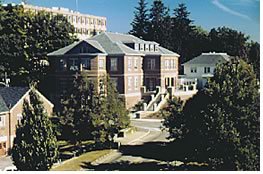Introduction
The University of New Hampshire was founded in the year 1866 and was known by the name of the New Hampshire College of Agriculture and the Mechanic Arts. It was situated in Hanover and was a land-grant institution set up to educate the children of farming and laboring families. The University of New Hampshire moved to its Durham campus in 1893 when Benjamin Thompson donated his land and money for the development of the college. In 1923, the college changed its name to the University of New Hampshire. Over the years many buildings such as Morrill Hall, Smith and Hamilton Smith Halls, Murkland Hall, Hood House, and Pettee Hall were built. Today, the University of New Hampshire is not only a land-grant institution, but it is also a sea- and space-grant university. The University of New Hampshire is one of the top research institutions of the United States.
The University of New Hampshire is located in Durham, New Hampshire. It is about an hour’s distance from Boston and is quite close to the Atlantic Ocean and the White Mountains of New Hampshire. The University of New Hampshire comprises numerous academic departments, research centers, and interdisciplinary institutes that attract thousands of students and faculty from across the globe.

